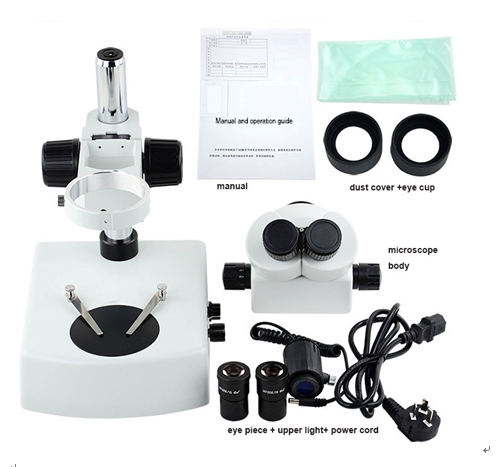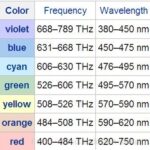Microscope accessories Microscope structure components includes
01 The three basic, structural components of a compound microscope are the head, base and arm.
Head/Body houses the optical parts in the upper part of the microscope
02 Base of the microscope supports the microscope and houses the illuminator
Arm connects to the base and supports the microscope head. It is also used to carry the microscope.
When carrying a compound microscope always take care to lift it by both the arm and base, simultaneously.
Microscope accessories and spare parts function
There are two optical systems in a compound microscope: Eyepiece Lenses and Objective Lenses:
1.1 Eyepiece or Ocular
is what you look through at the top of the microscope. Typically, standard eyepieces have a magnifying power of 10x. Optional eyepieces of varying powers are available, typically from 5x-30x.
Eyepiece Tube holds the eyepieces in place above the objective lens.
Binocular microscope heads typically incorporate a diopter adjustment ring that allows for the possible inconsistencies of our eyesight in one or both eyes. The monocular (single eye usage) microscope does not need a diopter. Binocular microscopes also swivel (Interpupillary Adjustment) to allow for different distances between the eyes of different individuals.
1.2 Objective Lenses
are the primary optical lenses on a microscope. They range from 4x-100x and typically, include, three, four or five on lens on most microscopes. Objectives can be forward or rear-facing.Nosepiece houses the objectives. The objectives are exposed and are mounted on a rotating turret so that different objectives can be conveniently selected. Standard objectives include 4x, 10x, 40x and 100x although different power objectives are available.
1.3 Coarse and Fine Focus knobs
are used to focus the microscope. Increasingly, they are coaxial knobs – that is to say they are built on the same axis with the fine focus knob on the outside. Coaxial focus knobs are more convenient since the viewer does not have to grope for a different knob.
1.4 Stage
is where the specimen to be viewed is placed. A mechanical stage is used when working at higher magnifications where delicate movements of the specimen slide are required.
1.5 Stage Clips
are used when there is no mechanical stage. The viewer is required to move the slide manually to view different sections of the specimen.this is stand base of microscope accessories.
1.6 Aperture is the hole in the stage through which the base (transmitted) light reaches the stage.
1.7 Illuminator is the light source for a microscope, typically located in the base of the microscope. Most light microscopes use low voltage, halogen bulbs with continuous variable lighting control located within the base.
1.8 Condenser is used to collect and focus the light from the illuminator on to the specimen. It is located under the stage often in conjunction with an iris diaphragm.
Iris Diaphragm controls the amount of light reaching the specimen. It is located above the condenser and below the stage. Most high quality microscope include an Abbe condenser with an iris diaphragm. Combined, they control both the focus and quantity of light applied to the specimen.
Condenser Focus Knob moves the condenser up or down to control the lighting focus on the specimen.

microscope accessories including spare parts of the unit and accemblied to one unit, microscope accessories list above but more than this due to different working place may need another special outer accessories to suport works
Visits: 15


